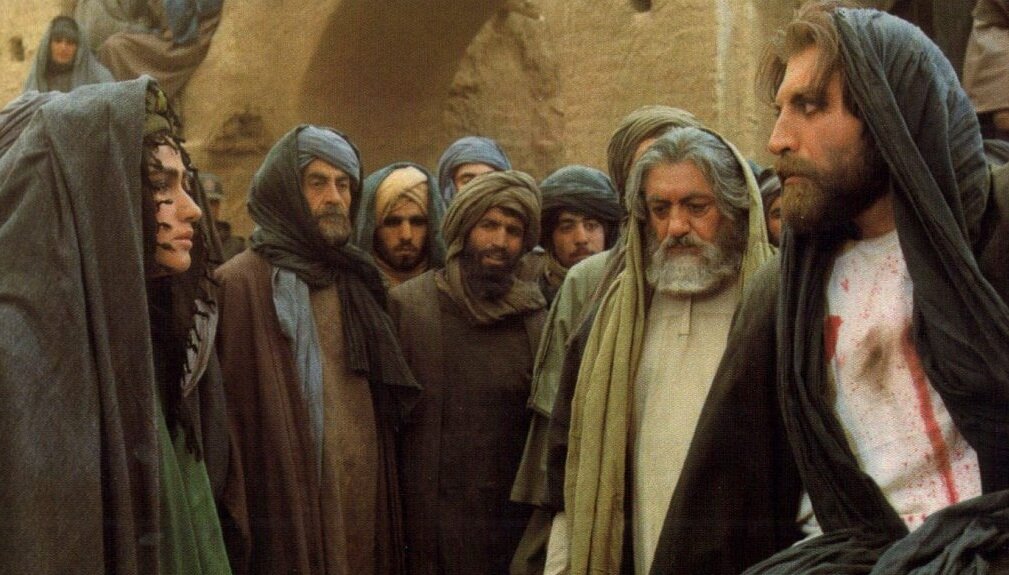INSUBCONTINENT EXCLUSIVE:
by celebrated Iranian director and playwright Bahram Beizai.The film is the story of a Christian man, Abdullah, who converts to Islam for
the love of a Muslim girl, Raheleh
At the wedding, he hears voices calling for help
He leaves the ceremony and takes a journey to Karbala
But he arrives at the end of the Battle of Karbala after the martyrdom of Imam Hussein (AS) and his companions.It is here, amidst the tragic
event, that Abdullah realizes the weighty responsibility that now rests upon his shoulders to carry forward the message of Ashura.The
presence of Beizai as the script writer is widely regarded by most critics as one of the key factors behind the success of this film.The
strength and innovation of the text, along with its bold details and symbolic dialogues that resonate with today's audience, have played a
crucial role in ensuring the film's enduring success over the years.This film features a stellar cast including Ezzatollah Entezami,
Jamshid Mashaiyekhi, Mehdi Fathi, and Mohammad Ali Keshavarz
the exceptional cast of talented actors, along with an impactful screenplay, transformed this momentous occasion into a timeless masterpiece
Maestro Majid Entezami has created an enduring masterpiece in the realm of Ashura melodies for the film
music was incredibly well-received by the audience, to the point that it was later released as a standalone album and gained significant
to perform it during his concerts and each time, the audience's response was indescribable, creating an unforgettable experience.Taking
inspiration from the profound theme of Ashura, this film stands as one of the most unforgettable works in the history of Iranian cinema."The
Fateful Day" is a remarkable work that explores the social aspects of the Ashura tragedy
Through its depiction of the society in which Imam Hussain (AS) was martyred, it delves into the influential factors that led to his unjust
martyrdom.Abdullah embarks on a journey throughout various locations, responding to the call for help, uncovering the profound presence of
Imam Hussain (AS) in every place he visits.During Abdullah's journey, he becomes acquainted with the societal issues plaguing the people
living under the rule of Yazid
Additionally, he witnesses firsthand the remarkable impact of Imam Hussain (AS) in resolving these problems.In this film, Imam Hussain (AS)
represents a beacon of blessings and light that brings prosperity to every household, abundance to every table, and adds profound
significance and coherence to every tradition
In contrast, Yazid embodies darkness that brings devastation to every community, impoverishes every subject, and fosters superstition in all
its forms.This film is a mesmerizing journey with Abdullah, as he gracefully moves like a butterfly towards the illuminating universe of
Through this captivating tale, we witness how the tenth day of Muharram in the year 61 AH of the Islamic calendar (680 CE) becomes a
Abdullah through his journey that ultimately guides him from a superficial, earthly love to a genuine love
In the film, we witness the tragic tale of a world under the rule of a tyrant like Yazid, where the noble Imam Hussein (AS) falls victim to

